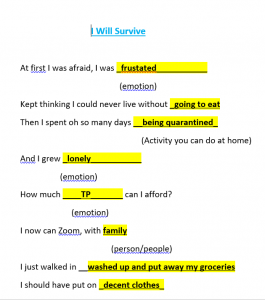Mental Health & Music

Back to physical health resource hub
Music is universal and transcends all barriers despite differences in culture, race, or religion. Regardless of music training or experience, all humans are hard-wired for music. Unlike other activities, music can activate multiple regions of our brain simultaneously. Let’s take a closer look at how this occurs when listening to music.
- The temporal lobes become activated when sound is perceived
- The consistent rhythm stimulates the motor cortices resulting in toe tapping or clapping
- The frontal lobe becomes involved when attending to the lyrics or the “story”
- Deep regions of the brain such as the hippocampus become stimulated when reminiscing about persons, places or memories associated with the music
- The limbic system becomes activated as the memories trigger a flood of emotions
You can see how leveraged our brain is when simply listening to music. Imagine how active it is when playing an instrument or engaging in a specific music intervention!
For many people, music is a part of our daily lives. We may exercise, take a road trip, study for an exam, complete chores or drift off to sleep while listening to music. Why? Because it makes us feel good. Music can pump us up or calm us. When we listen to our preferred music, we experience a release of the hormone dopamine. This hormone is associated with arousal, motivation, and reward. Research demonstrates that increased levels of dopamine result in enhanced mood, socialization, and reduced anxiety. Additionally, persons with depression, ADHD, and anxiety have decreased dopamine in the brain while persons with schizophrenia may experience dopamine dysregulation.
Enter music therapy! Music Therapy is an allied health profession that utilizes evidence-based interventions to address physical, speech/language, cognitive, social, and psychological functioning in persons of varying ages and diagnoses. When engaged in specific music therapy interventions, persons with mental health disorders can process and express complex thoughts and emotions in a safe space. Individuals may also develop healthy coping skills and cultivate relationships with others (in a group treatment setting) who may be experiencing similar experiences.
Music at its core is a reflection of creative expression so it makes sense that engaging a client in a music making experience (whether vocal or instrumental) would be a catalyst for communication and emotional expression. One of the interventions utilized for creative expression is song writing. Clients can create original songs by working with the music therapist to create original melodies, chords and/or lyrics. Clients may also create a piggyback song – where a pre-existing song is used but some or all of the words are substituted for words the client provides.
Below is an example of song written by a group during the height of the COVID pandemic.

Music assisted progressive muscle relaxation is used to help persons decrease physical stress and anxiety. The music therapist guides the client through a script that instructs them to tense and release muscles throughout the body. The music therapist can utilize live or recorded music during this intervention. If live music is used, specific chord progressions are used to mimic the tension-release of the exercises.
Music therapists can also engage clients in music listening followed by lyric analysis. The music therapist selects music and lyrics that are relatable to their clients. After playing the song live or listening to a recorded version, the therapist will facilitate a discussion of positive and negative meanings imbedded in the lyric content.
There are ways to incorporate music even for those individuals who do not have access to a music therapist. Individuals can practice slow, deep breaths and self-guided tension-relaxation exercises while listening to relaxing music.


